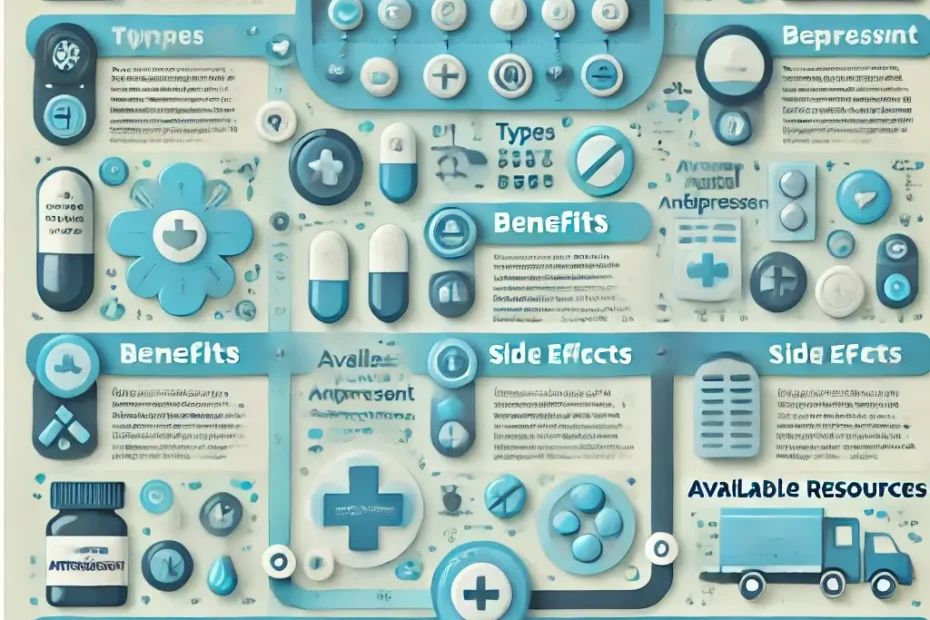Antidepressants Overview: Depression and anxiety affect millions of people worldwide. For many, antidepressants provide relief, helping to restore balance and stability in their lives.
Also Read
These medications work by adjusting brain chemicals linked to mood and emotion, offering a pathway to recovery. Understanding antidepressants is essential for making informed decisions. This guide will explain the different types of antidepressants, how they work, and their benefits. It will also address common concerns, like antidepressant side effects and the options available for those seeking treatments with fewer risks.
Whether you’re looking for “antidepressants that help with motivation” or want to know “what is the classification of antidepressants,” this article has you covered.
SSRIs, SNRIs, and tricyclic antidepressants are just a few examples of the types of antidepressants you’ll learn about. You’ll also find answers to questions like “what are the best antidepressants for anxiety?” and “what is the safest option for low mood?” By exploring these topics, you’ll gain a better understanding of the role antidepressants play in managing mental health.
This article is not just for those already on medication. It’s also for individuals exploring their options, caregivers seeking answers, and anyone curious about mental health treatments. Let’s uncover everything you need to know about antidepressants, empowering you with the knowledge to make the best choices for your mental well-being.
What Are Antidepressants?
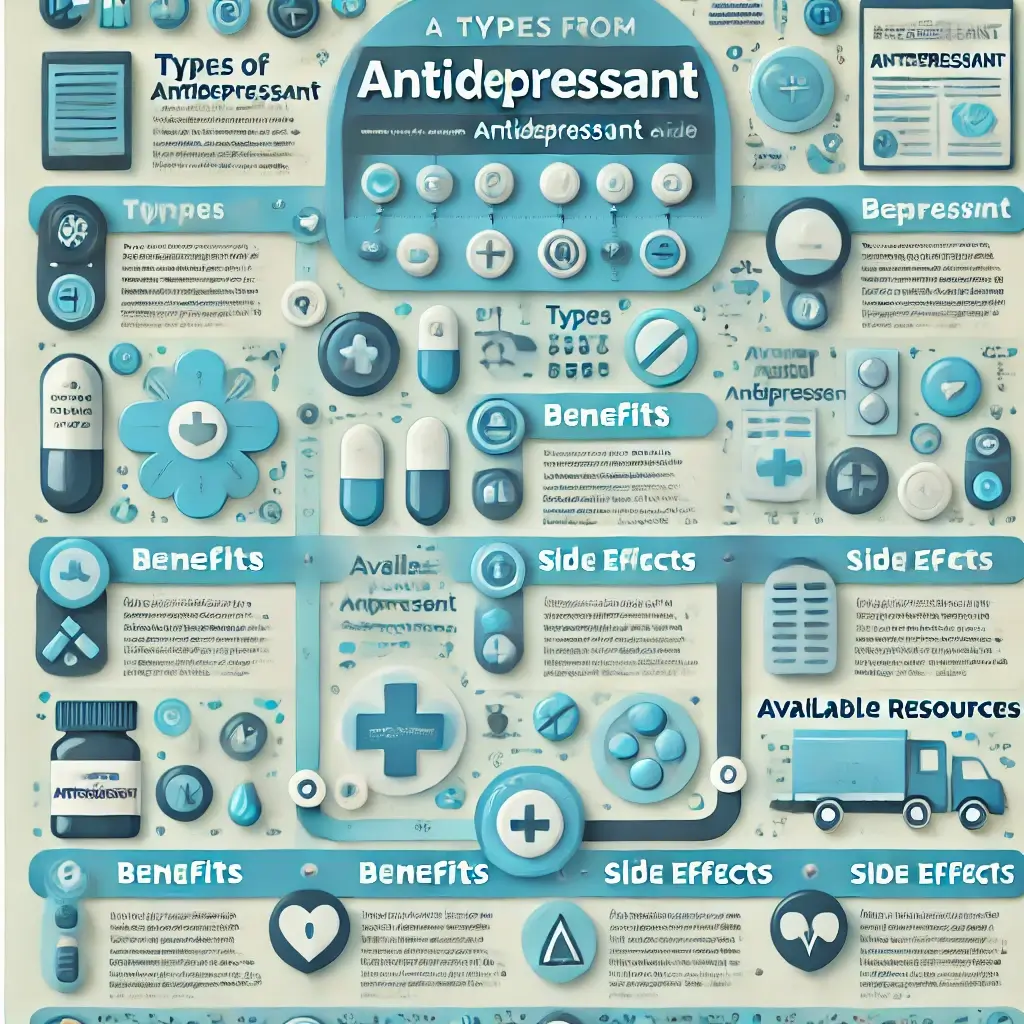
Antidepressants are medications designed to treat mental health conditions like depression, anxiety, and obsessive-compulsive disorder (OCD). These medications work by influencing the levels of neurotransmitters, such as serotonin and dopamine, in the brain. Antidepressants help balance these chemicals, which are crucial for regulating mood, emotions, and energy levels.
1. Purpose and Uses
The primary goal of antidepressants is to alleviate symptoms of depression, such as persistent sadness, loss of interest, and fatigue. They are also used to manage conditions like generalized anxiety disorder, post-traumatic stress disorder (PTSD), and chronic pain. These medications offer relief by stabilizing the brain’s chemical environment, making it easier for individuals to cope with everyday life.
2. Common Types of Antidepressants
There are several classes of antidepressants, each targeting specific symptoms:
- Selective Serotonin Reuptake Inhibitors (SSRIs): These are the most prescribed type and include medications like fluoxetine (Prozac) and sertraline (Zoloft). SSRIs increase serotonin levels in the brain, helping improve mood.
- Serotonin and Norepinephrine Reuptake Inhibitors (SNRIs): These, such as venlafaxine (Effexor), target both serotonin and norepinephrine to treat depression and anxiety.
- Tricyclic Antidepressants (TCAs): Older but still effective, these are used when SSRIs or SNRIs don’t work.
- Monoamine Oxidase Inhibitors (MAOIs): Reserved for severe depression, these are rarely used due to their side effects.
3. How They Work
Antidepressants influence the brain’s chemical balance. By increasing the availability of neurotransmitters, they create a more stable environment for emotional processing. For instance:
- SSRIs block the reabsorption of serotonin, increasing its availability.
- SNRIs target both serotonin and norepinephrine to reduce depressive symptoms.
- TCAs block the reuptake of several neurotransmitters, offering broader effects but with higher risks.
4. Benefits
Antidepressants can provide significant relief, especially when combined with therapy or lifestyle changes. They reduce the intensity of depressive symptoms, making it easier to manage daily responsibilities and improve relationships.
5. Considerations
While effective, antidepressants require time to show results—usually 4-6 weeks. They may not work for everyone, and side effects like nausea, weight changes, or insomnia are possible. It’s essential to consult with a healthcare provider to find the right medication and dosage.
Visual Table: Types of Antidepressants
| Type | Example Medications | Best For |
|---|---|---|
| SSRIs | Prozac, Zoloft | Anxiety, mild depression |
| SNRIs | Effexor, Cymbalta | Severe depression, GAD |
| TCAs | Amitriptyline, Nortriptyline | Chronic pain, depression |
| MAOIs | Phenelzine, Tranylcypromine | Treatment-resistant cases |
Affiliate Resources
How Antidepressants Work
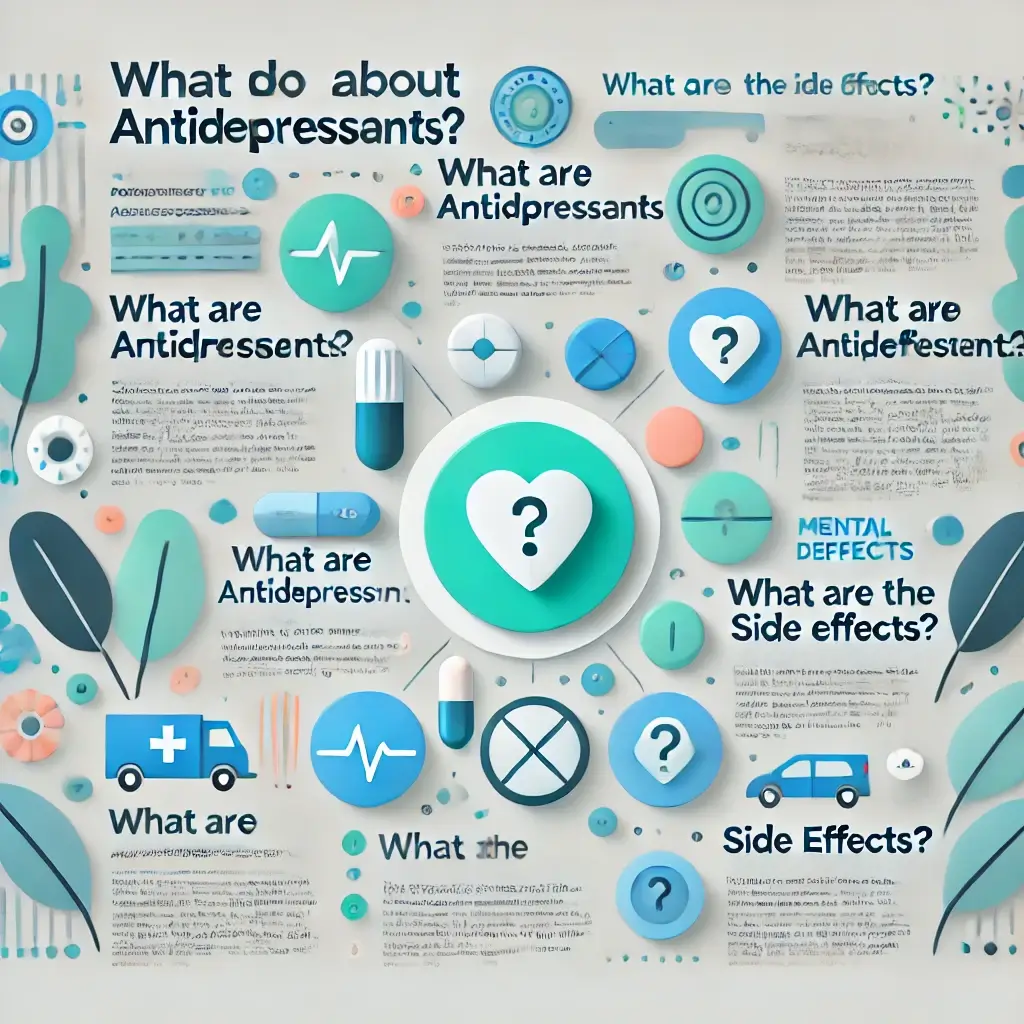
Antidepressants work by influencing the brain’s neurotransmitters, which are chemicals that transmit signals between nerve cells. These medications help balance levels of serotonin, dopamine, and norepinephrine, which play key roles in mood, energy, and mental clarity.
1. The Role of Neurotransmitters
Neurotransmitters like serotonin and norepinephrine regulate mood and emotional response. When these chemicals are imbalanced, it can lead to symptoms of depression and anxiety. Antidepressants target this imbalance to improve communication between nerve cells, stabilizing mood and reducing symptoms.
- Serotonin (5-HT): Associated with feelings of happiness and well-being.
- Dopamine (DA): Regulates motivation and pleasure.
- Norepinephrine (NE): Influences focus and alertness.
2. Mechanisms of Action
Different classes of antidepressants work in distinct ways:
- Selective Serotonin Reuptake Inhibitors (SSRIs): Prevent serotonin from being reabsorbed, increasing its availability.
- Serotonin and Norepinephrine Reuptake Inhibitors (SNRIs): Enhance both serotonin and norepinephrine levels.
- Tricyclic Antidepressants (TCAs): Block reuptake of multiple neurotransmitters for broader effects.
- Monoamine Oxidase Inhibitors (MAOIs): Inhibit the enzyme monoamine oxidase, preventing neurotransmitter breakdown.
3. Timeframe for Effectiveness
Antidepressants typically take 4-6 weeks to show noticeable effects. This delay occurs because the brain needs time to adjust to increased neurotransmitter activity. It’s important to stay consistent with the prescribed dosage and consult a doctor if changes are needed.
4. Benefits and Challenges
- Benefits: Improved mood, reduced anxiety, better sleep, and restored interest in daily activities.
- Challenges: Side effects like nausea, headaches, or fatigue may occur initially but often lessen over time.
Visual Chart: How Antidepressants Work
| Type | Neurotransmitter Targeted | Mechanism | Example Medication |
|---|---|---|---|
| SSRIs | Serotonin | Blocks reabsorption of serotonin | Prozac, Zoloft |
| SNRIs | Serotonin, Norepinephrine | Blocks reabsorption of serotonin and NE | Effexor, Cymbalta |
| TCAs | Serotonin, Norepinephrine | Blocks reabsorption of multiple neurotransmitters | Amitriptyline, Nortriptyline |
| MAOIs | Serotonin, Dopamine, NE | Prevents breakdown of neurotransmitters | Phenelzine, Selegiline |
Affiliate Resources
Types of Antidepressants
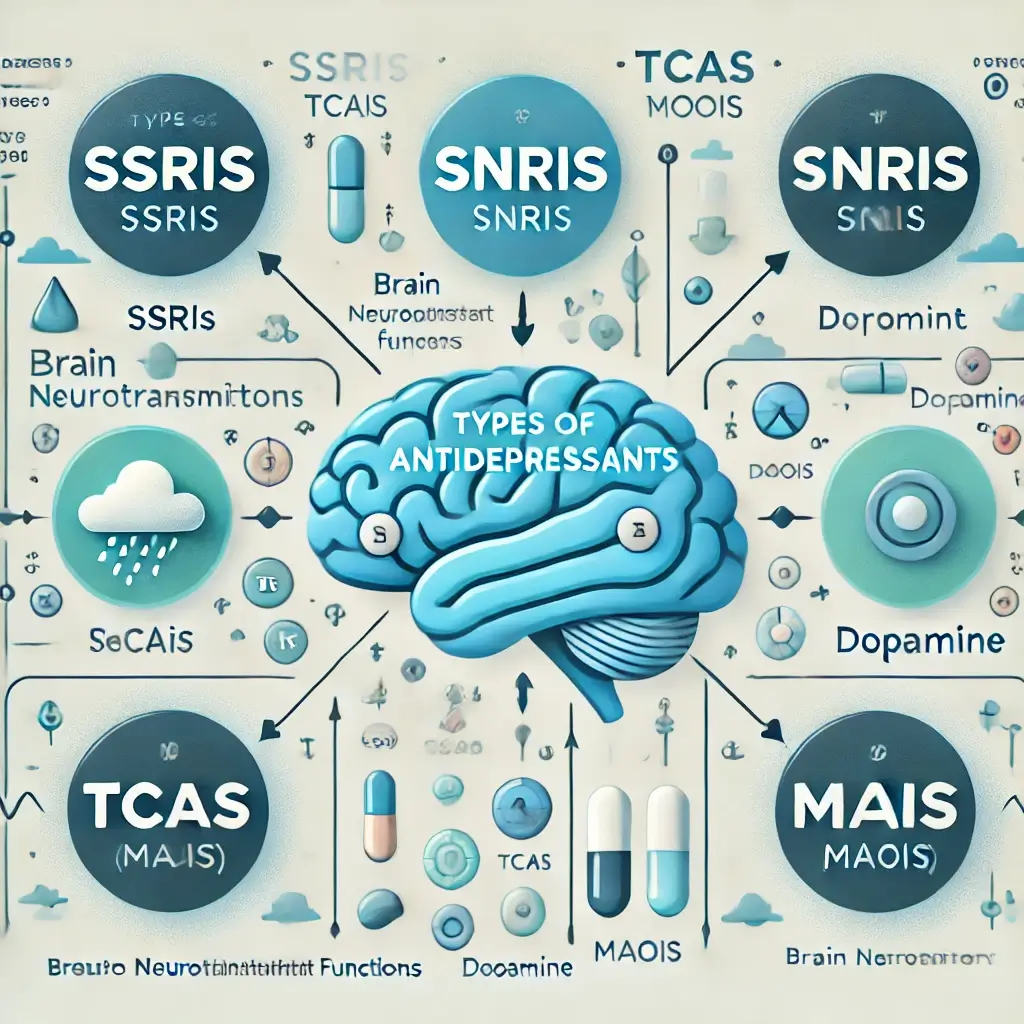
Antidepressants come in various classes, each tailored to address specific symptoms of mental health conditions. Understanding the types of antidepressants can help patients and healthcare providers choose the most suitable treatment.
1. Selective Serotonin Reuptake Inhibitors (SSRIs)
SSRIs are the most commonly prescribed antidepressants due to their effectiveness and mild side effects. They work by increasing serotonin levels in the brain, which helps regulate mood.
- Examples: Fluoxetine (Prozac), Sertraline (Zoloft).
- Best For: Depression, anxiety disorders, OCD.
- Side Effects: Nausea, headache, sleep disturbances.
- Affiliate Resource: Discover SSRIs and Their Benefits.
2. Serotonin and Norepinephrine Reuptake Inhibitors (SNRIs)
SNRIs target serotonin and norepinephrine, making them effective for severe depression and chronic pain. They enhance focus and mood stability.
- Examples: Venlafaxine (Effexor), Duloxetine (Cymbalta).
- Best For: Major depressive disorder (MDD), fibromyalgia, generalized anxiety disorder.
- Side Effects: Increased sweating, dry mouth, dizziness.
- Affiliate Resource: Learn About SNRIs.
3. Tricyclic Antidepressants (TCAs)
TCAs are an older class of antidepressants but are still used when newer medications are ineffective. They affect serotonin and norepinephrine but are less selective, which can lead to more side effects.
- Examples: Amitriptyline, Nortriptyline.
- Best For: Chronic pain, severe depression, migraines.
- Side Effects: Weight gain, drowsiness, blurred vision.
- Affiliate Resource: Explore Affordable TCAs.
4. Monoamine Oxidase Inhibitors (MAOIs)
MAOIs prevent the breakdown of neurotransmitters like serotonin and dopamine, making them effective for treatment-resistant depression. However, they require dietary restrictions to avoid adverse reactions.
- Examples: Phenelzine (Nardil), Tranylcypromine (Parnate).
- Best For: Atypical depression, panic disorders.
- Side Effects: High blood pressure with certain foods, dizziness.
Visual Comparison Table
| Antidepressant Type | How It Works | Best For | Examples |
|---|---|---|---|
| SSRIs | Boost serotonin levels | Depression, anxiety | Prozac, Zoloft |
| SNRIs | Boost serotonin and norepinephrine | Severe depression, chronic pain | Effexor, Cymbalta |
| TCAs | Increase serotonin and norepinephrine, less selective | Chronic pain, migraines | Amitriptyline, Nortriptyline |
| MAOIs | Prevent breakdown of neurotransmitters | Atypical depression, OCD | Phenelzine, Parnate |
Emerging Treatments
Recent advancements have introduced alternatives like ketamine-based therapies and digital tools to monitor antidepressant efficacy. These options cater to individuals who don’t respond well to traditional treatments.
Benefits of Antidepressants

Antidepressants are not just medications; they are lifelines for many people coping with mental health challenges. These drugs can significantly improve the quality of life by alleviating symptoms of depression and anxiety. Understanding their benefits helps build confidence in their use as part of a treatment plan.
1. Alleviating Depression Symptoms
The primary purpose of antidepressants is to reduce symptoms like persistent sadness, fatigue, and lack of motivation. Selective Serotonin Reuptake Inhibitors (SSRIs) and Serotonin and Norepinephrine Reuptake Inhibitors (SNRIs) increase serotonin and norepinephrine levels, helping stabilize mood.
- Example: Research shows that 60-70% of individuals respond positively to SSRIs (Source: National Institute of Mental Health).
- Affiliate Resource: Learn More About SSRIs.
2. Reducing Anxiety and Stress
Antidepressants like SNRIs are highly effective in managing anxiety disorders. By regulating brain chemicals, they reduce the overwhelming feelings associated with anxiety, making daily life more manageable.
- Stat: SNRIs have a 65% success rate in reducing anxiety symptoms (Source: APA Journals).
- Affiliate Resource: Explore Anxiety Treatment Options.
3. Enhancing Sleep and Energy Levels
Chronic depression often disrupts sleep and leaves individuals feeling drained. Antidepressants can restore natural sleep patterns and boost energy levels, improving overall productivity and focus.
- Example: Tricyclic antidepressants (TCAs) are particularly effective for insomnia associated with depression.
- Affiliate Resource: Find TCAs for Better Sleep.
4. Improving Overall Quality of Life
By alleviating mental health symptoms, antidepressants enable individuals to re-engage with hobbies, build relationships, and handle stress more effectively. This comprehensive improvement enhances long-term well-being.
- Example: Individuals who stick with prescribed antidepressants report higher rates of life satisfaction after 12 weeks (Source: Mayo Clinic).
Visual Chart: Benefits of Antidepressants
| Benefit | How It Helps | Best Antidepressants |
|---|---|---|
| Reduced depression | Stabilizes serotonin and dopamine | SSRIs, SNRIs |
| Decreased anxiety | Balances norepinephrine and serotonin | SNRIs, MAOIs |
| Better sleep | Helps regulate sleep cycles | TCAs |
| Improved energy levels | Boosts focus and motivation | SSRIs, SNRIs |
5. Balanced Perspective
While the benefits are numerous, it’s essential to pair antidepressants with therapy or lifestyle changes for the best outcomes. Addressing root causes through Cognitive Behavioral Therapy (CBT) or mindfulness practices complements medication for long-lasting results.
Risks and Side Effects of Antidepressants
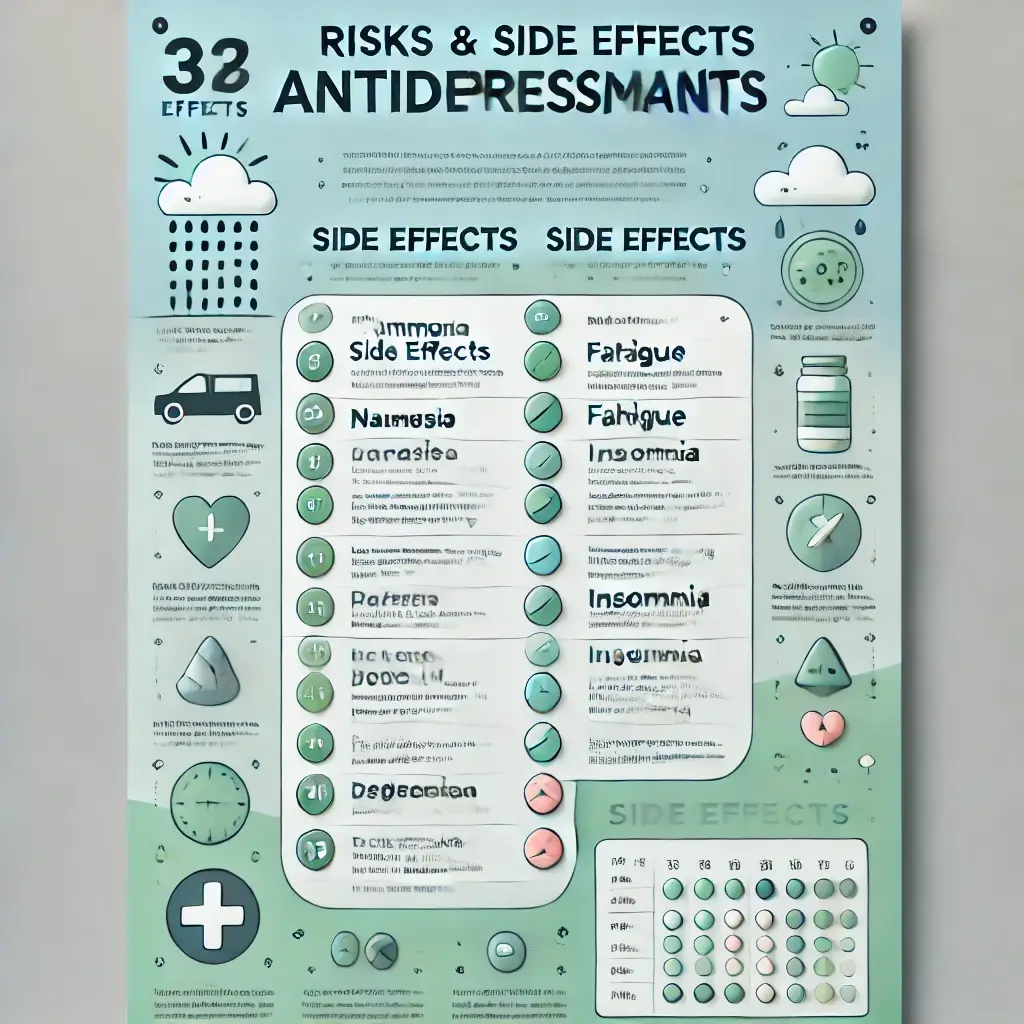
Antidepressants provide significant relief for many people, but they are not without potential risks and side effects. Understanding these effects ensures patients can make informed decisions and work closely with healthcare providers to manage them effectively.
1. Common Side Effects
Most antidepressants come with mild, manageable side effects that diminish over time. These include:
- Nausea and Stomach Upset: Common with SSRIs and SNRIs.
- Fatigue or Drowsiness: Some medications, such as tricyclic antidepressants, may cause tiredness.
- Insomnia: Ironically, certain antidepressants may disrupt sleep patterns initially.
- Headaches: Often reported during the first few weeks of treatment.
Affiliate Resource: Explore Medications with Fewer Side Effects
2. Less Common but Serious Risks
While rare, some patients may experience:
- Increased Anxiety or Agitation: Typically seen in the early weeks as the body adjusts.
- Weight Changes: Medications like TCAs and MAOIs may lead to weight gain.
- Sexual Dysfunction: A reported concern for those on SSRIs.
- Serotonin Syndrome: A potentially dangerous condition from excessive serotonin, usually caused by combining medications improperly.
Affiliate Resource: Find Information on Risk Management
3. Managing Side Effects
Patients can often mitigate side effects with minor adjustments:
- Nausea: Take medications with food to reduce stomach irritation.
- Sleep Issues: Use sleep hygiene practices or adjust medication timing under a doctor’s guidance.
- Consult Regularly: Frequent check-ins with healthcare providers ensure proper adjustments.
4. Risks of Long-Term Use
Long-term use of antidepressants may pose additional challenges, including dependence and withdrawal symptoms when stopping suddenly.
- Tip: Always taper off medications under medical supervision to avoid withdrawal effects like dizziness or mood swings.
Visual Table: Common Side Effects of Antidepressants
| Side Effect | Frequency | Typical Resolution | Example Medications |
|---|---|---|---|
| Nausea | Common (20-30%) | 1-2 weeks | SSRIs, SNRIs |
| Fatigue or drowsiness | Common (15-20%) | 2-4 weeks | TCAs, MAOIs |
| Sexual dysfunction | Moderate (10-15%) | Ongoing (doctor may switch meds) | SSRIs |
| Weight gain | Moderate (10-15%) | Long-term management required | TCAs, MAOIs |
5. Personalized Care
Antidepressants affect everyone differently. Open communication with healthcare providers ensures that risks are minimized and side effects are appropriately managed. Pairing medication with therapy often results in better outcomes.
Affiliate Resource: Affordable Therapy and Medication Options
Antidepressants vs. Other Treatments
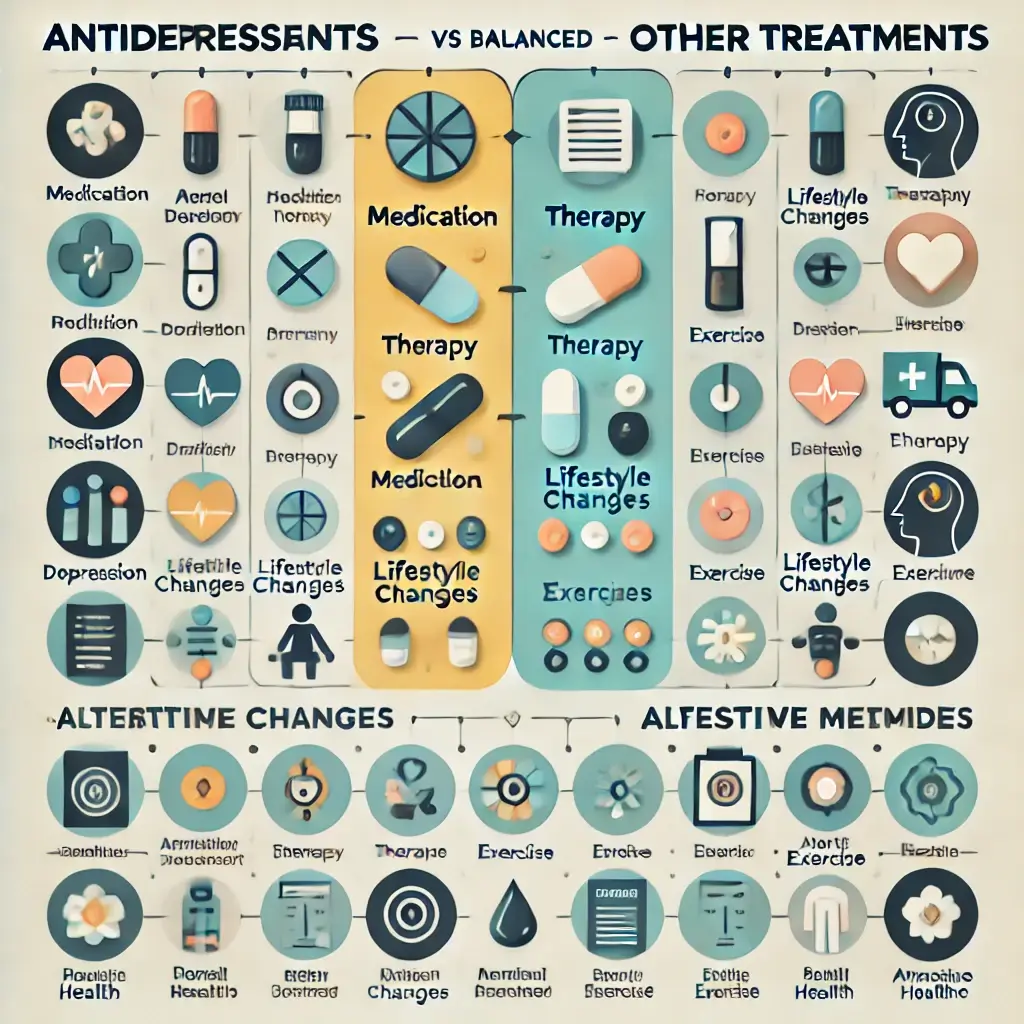
When managing depression and anxiety, antidepressants are a common option. However, they are not the only solution. Comparing antidepressants with other treatments like therapy, lifestyle changes, and alternative methods helps individuals choose what works best for them.
1. Antidepressants: A Medical Approach
Antidepressants work by targeting brain chemicals to alleviate symptoms of depression and anxiety. They are especially effective for moderate to severe cases.
- Advantages: Quick symptom relief, suitable for severe mental health conditions.
- Challenges: Potential side effects and the need for long-term use.
Affiliate Resource: Explore Antidepressant Options.
2. Therapy: A Behavioral Approach
Cognitive Behavioral Therapy (CBT) and other forms of psychotherapy address the root causes of depression. These treatments help patients develop coping skills and improve thought patterns.
- Advantages: No physical side effects, long-lasting benefits.
- Challenges: Requires commitment and time.
Affiliate Resource: Affordable Therapy Resources.
3. Lifestyle Changes
Changes in diet, exercise, and sleep patterns can significantly improve mental health. Regular exercise boosts endorphins, while a balanced diet supports brain function.
- Advantages: Low cost, promotes overall health.
- Challenges: Requires self-discipline and time to see effects.
Affiliate Resource: Find Tools for Healthy Living.
4. Alternative Treatments
Mindfulness practices, meditation, and yoga are effective for mild to moderate symptoms. Other options like transcranial magnetic stimulation (TMS) or ketamine-based therapies are available for treatment-resistant depression.
- Advantages: Non-invasive, effective for some individuals.
- Challenges: Limited research on long-term effects for some methods.
Visual Comparison Table
| Treatment | How It Works | Advantages | Challenges |
|---|---|---|---|
| Antidepressants | Balances neurotransmitters | Quick relief, effective for severe cases | Side effects, dependence risk |
| Therapy | Addresses behavioral patterns | No side effects, long-term results | Requires time and consistency |
| Lifestyle Changes | Improves physical and mental health | Low cost, holistic benefits | Requires self-discipline |
| Alternative Treatments | Stimulates brain activity | Non-invasive, innovative options | Limited research |
5. Combining Treatments
Many patients benefit most from a combination of treatments. For example, pairing antidepressants with CBT or adding exercise to a treatment plan enhances outcomes.
More Tips: About Antidepressants

Antidepressants are medications used to treat depression, anxiety, and other mental health conditions. They work by adjusting brain chemicals like serotonin and dopamine, helping to improve mood, focus, and energy. These drugs can help those with lasting sadness or low motivation.
1. Types of Antidepressants
There are several types of antidepressants, each with unique benefits:
- SSRIs (Selective Serotonin Reuptake Inhibitors): These are the most prescribed medications, known for having fewer side effects. They help increase serotonin levels in the brain. Examples include Prozac and Zoloft.
- SNRIs (Serotonin-Norepinephrine Reuptake Inhibitors): These boost both serotonin and norepinephrine, improving mood and energy levels. Effexor and Cymbalta are common choices.
- Tricyclic Antidepressants (TCAs): Older medications like Amitriptyline are effective but can cause more side effects.
- MAOIs (Monoamine Oxidase Inhibitors): These are used for severe depression that doesn’t respond to other treatments.
2. How Antidepressants Work
Antidepressants help balance neurotransmitters in the brain. For instance, SSRIs stop the reabsorption of serotonin, making it more available for mood regulation. SNRIs also affect norepinephrine, helping with energy and focus. These mechanisms can relieve symptoms like fatigue and low mood over time.
3. Benefits and Risks
Antidepressants provide relief by reducing anxiety, improving sleep, and boosting motivation. But, they may cause side effects like nausea, insomnia, or weight changes. It’s important to work with your doctor to find the best option for your needs.
4. Complementary Options
In addition to medication, therapy, mindfulness tools, and support groups for depression can improve recovery. Exercise and a healthy diet also play a key role in supporting mental health.
5. Affordable and Safe Choices
Affordable options like generic antidepressants make treatment accessible. For long-term use, regular check-ins with your doctor ensure safety and effectiveness. If you stop taking medication, reduce the dose slowly. Do this under a doctor’s supervision. This avoids withdrawal symptoms.
By understanding the classification of antidepressants, their types, and how they work, you can make informed decisions. Whether you’re exploring SSRIs, looking for antidepressants with fewer side effects, or considering complementary approaches, there are effective solutions to support your journey.
FAQs of Antidepressants Overview
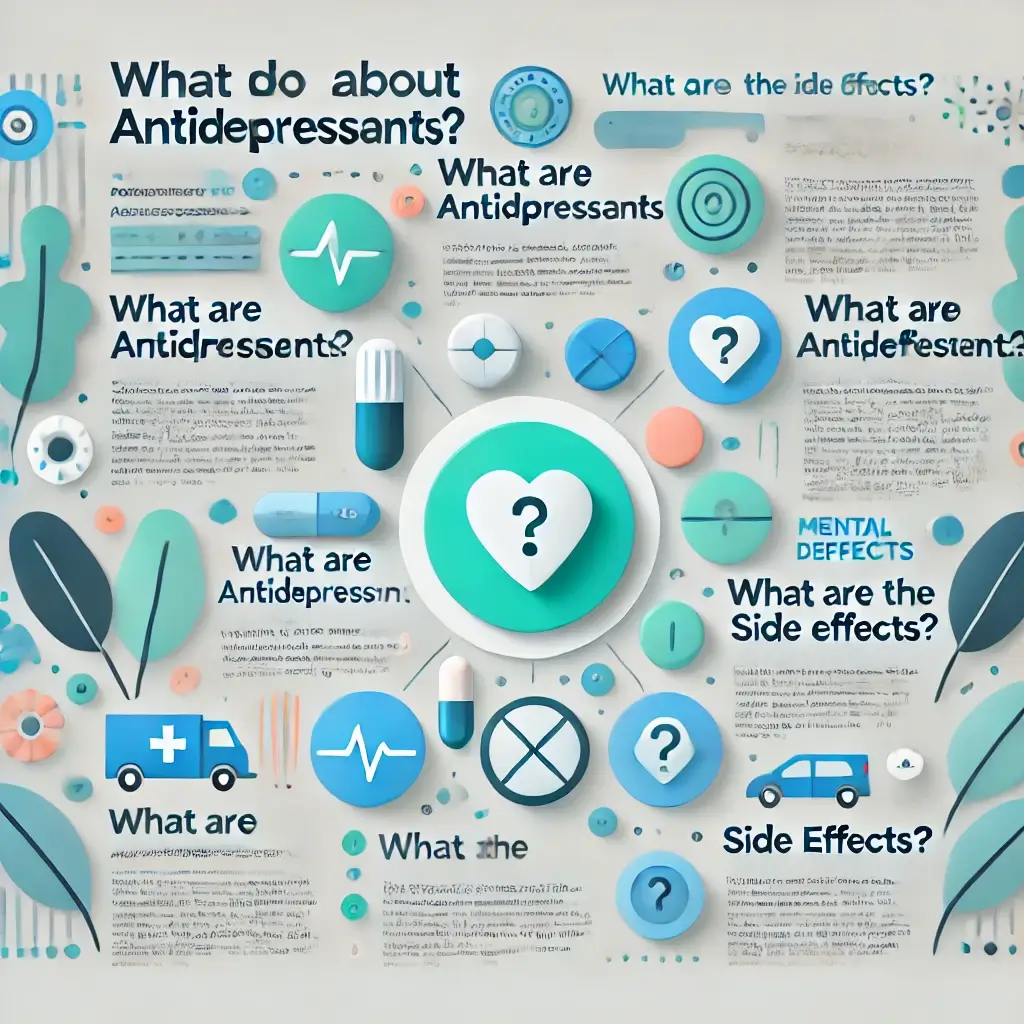
Answering common questions about antidepressants helps demystify their purpose and usage. This section provides clear, concise answers to frequently asked questions, improving accessibility and user engagement.
1. What are antidepressants?
Antidepressants are medications designed to treat mental health conditions like depression, anxiety, and OCD. They work by balancing neurotransmitters in the brain, such as serotonin and dopamine, to improve mood and emotional stability.
Affiliate Resource: Learn More About Antidepressants.
2. What are the 4 main types of antidepressants?
The four main types of antidepressants are:
- SSRIs (Selective Serotonin Reuptake Inhibitors): Boost serotonin levels.
- SNRIs (Serotonin-Norepinephrine Reuptake Inhibitors): Enhance serotonin and norepinephrine.
- TCAs (Tricyclic Antidepressants): Older medications with broader effects.
- MAOIs (Monoamine Oxidase Inhibitors): Reserved for severe or treatment-resistant depression.
Affiliate Resource: Explore Different Antidepressants.
3. How long do antidepressants take to work?
Most antidepressants take 4-6 weeks to show noticeable improvements. However, some people may feel better within 2 weeks, depending on the medication and their individual response.
4. Are antidepressants safe to use long-term?
Antidepressants are generally safe for long-term use under medical supervision. However, it’s essential to have regular check-ins with a healthcare provider to monitor for side effects or adjustments.
5. Can antidepressants cause dependency?
Unlike addictive substances, antidepressants don’t cause dependency in the traditional sense. However, stopping them suddenly can lead to withdrawal symptoms. Always consult your doctor before discontinuing.
Affiliate Resource: Find Guidance on Managing Medication.
6. What are the most common side effects of antidepressants?
Common side effects include nausea, headache, fatigue, and insomnia. These often lessen over time. For severe side effects, consult your doctor immediately.
7. Can I combine antidepressants with other treatments?
Yes, combining antidepressants with therapy, such as Cognitive Behavioral Therapy (CBT), often leads to better results. Lifestyle changes, like exercise and mindfulness, also complement medication.
Visual Table: FAQ Summary
| Question | Answer Summary |
|---|---|
| What are antidepressants? | Medications to balance neurotransmitters in the brain. |
| Types of antidepressants? | SSRIs, SNRIs, TCAs, MAOIs. |
| Time to work? | Usually 4-6 weeks. |
| Safe for long-term use? | Yes, with regular monitoring. |
| Common side effects? | Nausea, headache, fatigue. |
| Combined with other treatments? | Therapy and lifestyle changes enhance effectiveness. |
Resources and Support
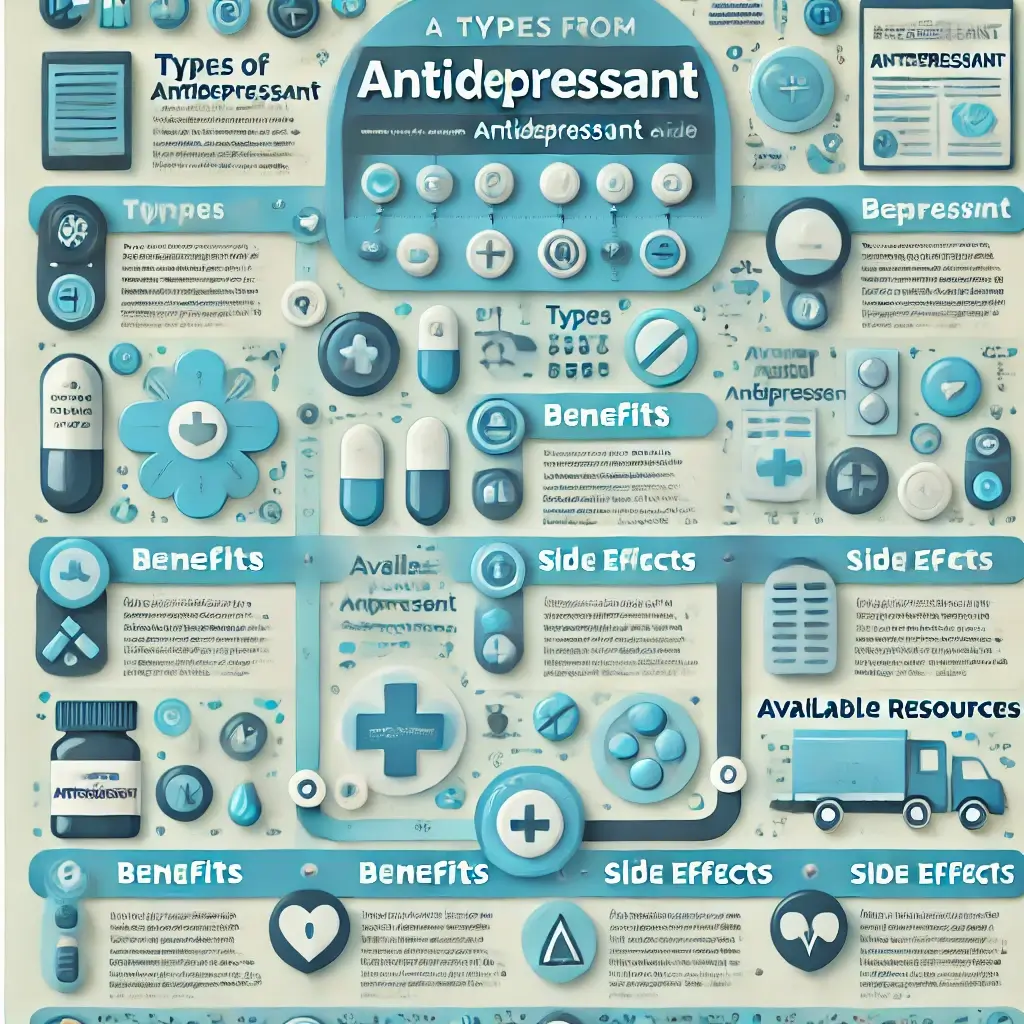
Navigating mental health treatment can feel overwhelming, but numerous resources and support systems are available to guide you. Whether you’re starting antidepressants, exploring alternatives, or seeking affordable options, this section provides actionable solutions.
1. Online Therapy Platforms
Digital platforms like BetterHelp and Talkspace connect you with licensed therapists, offering flexible and accessible care. These services are ideal for individuals who prefer remote therapy due to location or scheduling challenges.
- Advantages: Affordable pricing, 24/7 accessibility, and a wide range of specialists.
- Affiliate Resource: Find Online Therapy Options.
2. Community Helplines
For immediate support, helplines like the National Suicide Prevention Lifeline (1-800-273-TALK) provide free and confidential assistance. Many local organizations also offer hotlines for crisis intervention and emotional support.
- Example Resource: NAMI (National Alliance on Mental Illness) offers free mental health resources and support groups.
3. Affordable Medication Programs
Medication costs can be a barrier, but many options exist to make antidepressants more affordable:
- Generic Medications: Generic versions of common antidepressants, like fluoxetine, are significantly cheaper.
- Discount Programs: Services like GoodRx and RxAssist offer discounts and coupons for prescription medications.
- Affiliate Resource: Explore Affordable Medication Options.
4. Lifestyle-Based Support
Incorporating lifestyle changes can amplify the benefits of antidepressants:
- Exercise Programs: Regular exercise boosts mood and complements medication.
- Mindfulness Apps: Tools like Headspace and Calm teach mindfulness techniques that reduce stress.
- Affiliate Resource: Mindfulness and Lifestyle Tools.
5. Support Groups and Forums
Connecting with others who share similar experiences can provide emotional relief and practical advice. Many organizations, like Mental Health America (MHA), host online and in-person support groups for depression and anxiety.
Visual Table: Key Mental Health Resources
| Category | Examples | Key Benefits |
|---|---|---|
| Online Therapy Platforms | BetterHelp, Talkspace | Accessible, flexible therapy sessions |
| Community Helplines | NAMI, National Suicide Prevention | Free, immediate crisis support |
| Affordable Medication | GoodRx, RxAssist | Reduced costs for prescriptions |
| Lifestyle Resources | Headspace, Calm | Stress management and emotional balance |
| Support Groups | MHA forums, local community groups | Peer support and shared experiences |
6. Combining Resources
Using a combination of these resources often yields the best results. For example, pairing therapy with mindfulness apps or support groups provides a holistic approach to mental health care.
Conclusion: Empowering Your Mental Health Journey
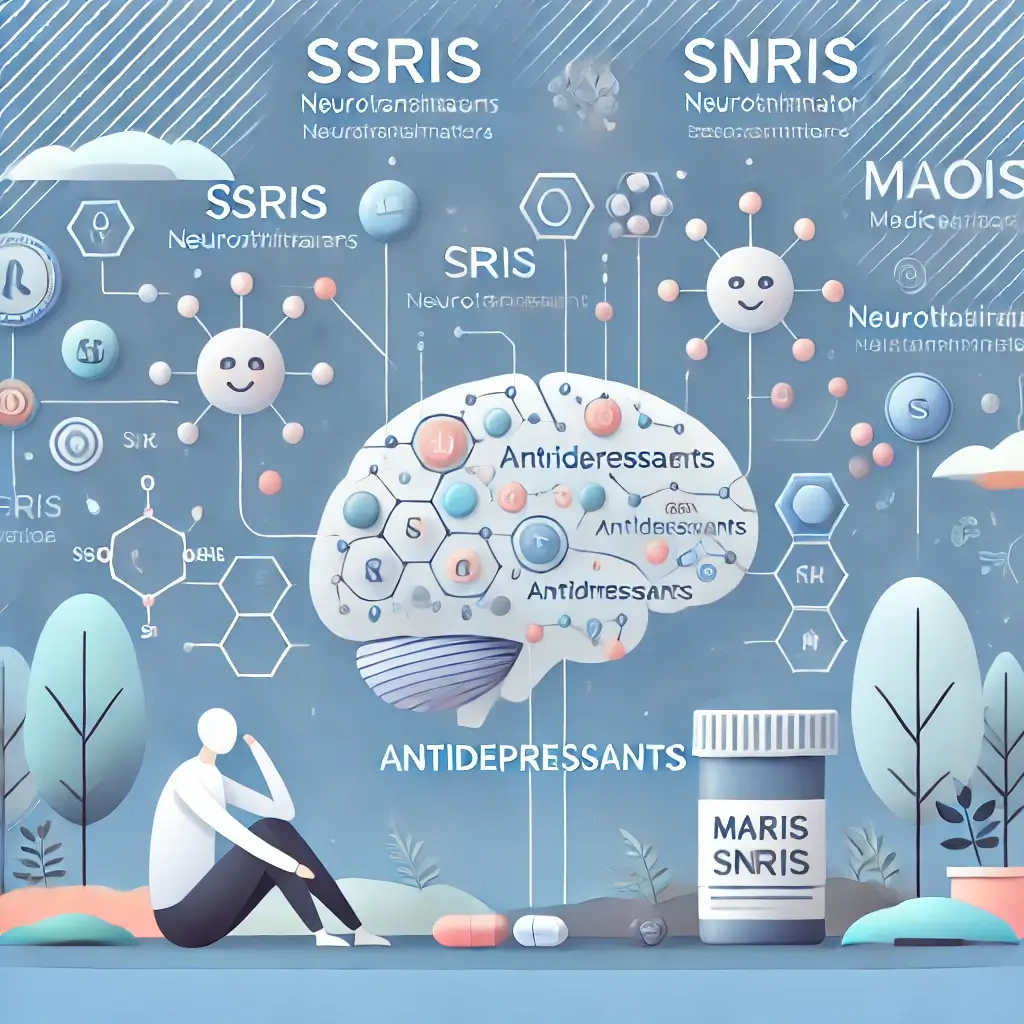
Choosing the right path to mental wellness can feel overwhelming, but with the right tools and support, it becomes manageable. Antidepressants are a vital part of many treatment plans, offering relief for those facing depression and anxiety. By understanding their types, benefits, and side effects, you can make informed decisions that align with your unique needs.
Key Takeaways
- Antidepressants like SSRIs and SNRIs are effective for managing symptoms but should be used under medical supervision.
- Combining medication with therapy, lifestyle changes, or support groups enhances recovery.
- Resources such as online therapy platforms and affordable medication programs provide valuable assistance.
Your mental health journey is personal. Take small steps, explore available options, and always consult healthcare professionals for guidance. With time and effort, you can regain control and build a fulfilling life.
